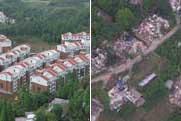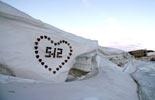World
Backgrounder: Space debris -- man-made threat in space exploration
Source: Xinhua | 02-12-2009 13:26
Special Report: Tech MaxBEIJING, Feb. 12 (Xinhua) -- One privately owned U.S. communications satellite collided with a defunct Russian satellite in space shooting out a pair of massive debris clouds and posing possible risks to the international space station, NASA said Wednesday.
It was the first such collision in space, NASA spokesman Kelly Humphries said. But there's still no confirmation of the accident from Russia.
Space debris, also called space junk and space waste, are the objects in orbit around Earth created by humans, that no longer serve any useful purpose.
They consist of everything from entire spent rocket stages and defunct satellites to explosion fragments, paint flakes, dust, and slag from solid rocket motors, coolant released by nuclear powered satellites, deliberate insertion of small needles, and other small particles.
Space junk has posed a growing concern in the countries which pursue space exploration in recent years, since collisions at orbital velocities can be highly damaging to functioning satellites and can also produce even more space debris.
Since the former Soviet Union sent the first satellite into space in 1957, human exploration of space has left numerous debris, or rubbish, in the vast space.
At the beginning of this year, there were roughly 17,000 pieces of manmade debris orbiting Earth, said Nicholas Johnson, chief scientist of NASA's Orbital Debris Program Office at the Johnson Space Center in Houston.
Last April, scientist at the American Physical Society conference in Los Angeles said there were already more than 150 million pieces, among which a large amount were junks created by astronauts. They predicted that the amount would still increase in the next 200 years.
Early statistics showed that about 45 percent of space debris was produced by the United States and 48 percent by Russia or former Soviet Union. China produced only 1.2 percent.



